Cobots as a door opener to the establishment of robotics
- Details
- Hits: 21995
Industrial robots are increasingly used today to increase productivity and precision in manufacturing. They also relieve people of tiresome, repetitive tasks. Cobots or collaborativeAlso collaborative robots go one step further here. You actually work with the human being. The article gives insights into the collaborative robot know-how and cobot portfolio of Mitsubishi Electric.
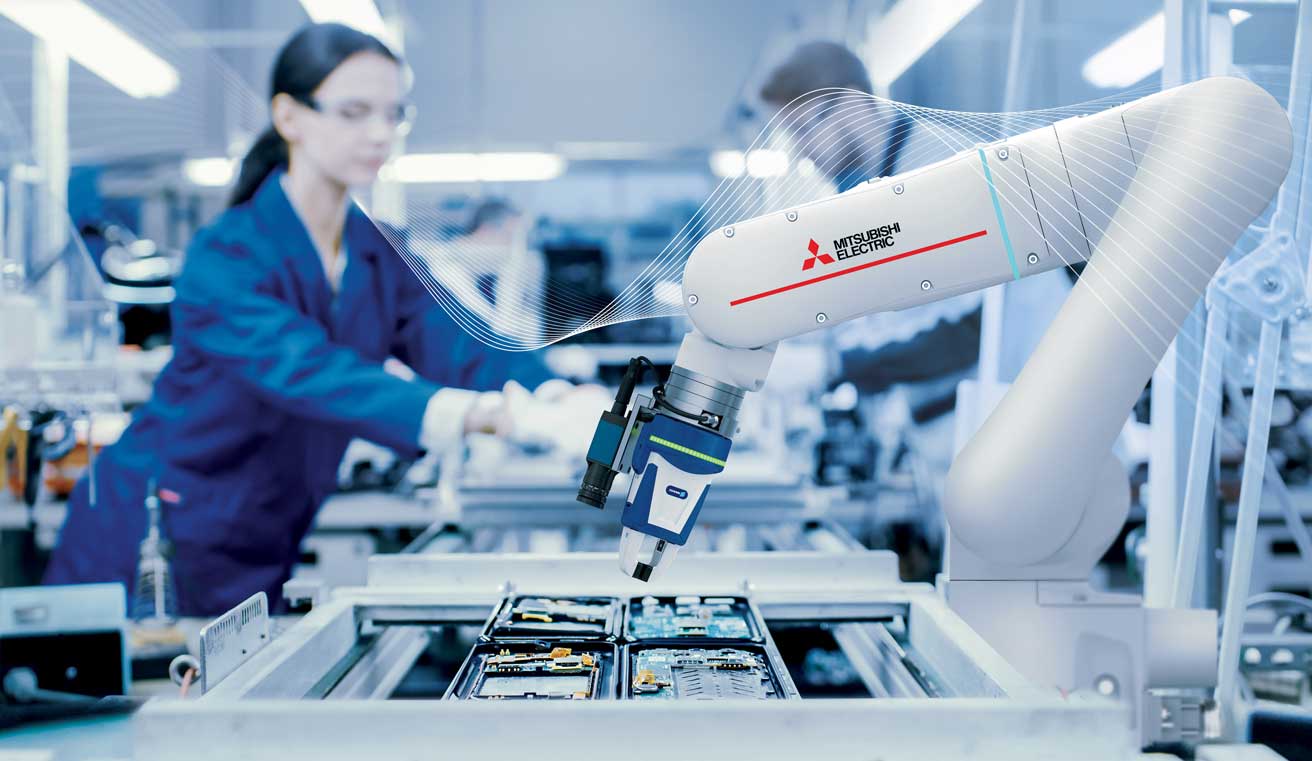
Contents
- Is the industrial robot dying out?
- Five reasons that speak for cobots
- Collaborative robots for high mix low volume manufacturing
- Cobot Assista and its user-friendly features
- Trends for robots and automation in packaging technology
Is the industrial robot dying out?
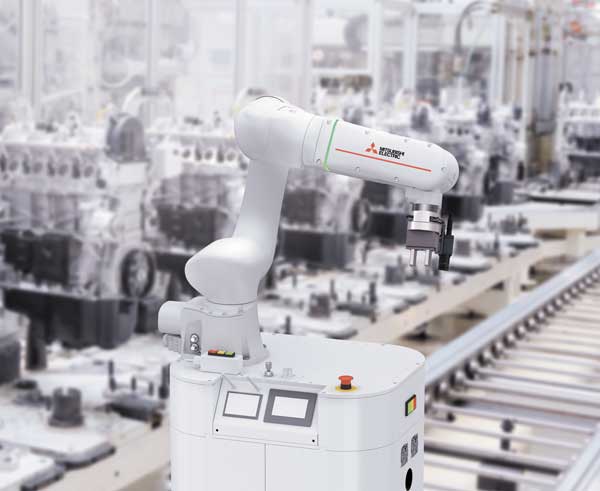 Will traditional industrial robots soon no longer be needed because the advantages of cobots make them superfluous? The answer, of course, is "no". If speed is required, it is still the first choice.
Will traditional industrial robots soon no longer be needed because the advantages of cobots make them superfluous? The answer, of course, is "no". If speed is required, it is still the first choice.
However, the technology of the cobots has an impact on the development of industrial robots. Lots of security featuresFirst seen on collaborative robots, are now standard on the industrial versions. Cobots are often used in the same production lines as industrial robots. Hence, there is an advantage in choosing a provider who like Mitsubishi Electric can offer both.
Users should refer to the following Features with the right choice of the robot: It should offer the simplicity of programming already described, but also more sophisticated functions, such as an advanced scripting language. Only in this way can the applications to be mastered by the robot become more and more demanding with increasing knowledge of the user.
Five reasons that speak for cobots
26.11.2021/XNUMX/XNUMX | Cobots are playing an increasingly important role in the adoption of future technologies. They not only relieve the human colleagues in production, processing and assembly, but also increase productivity and flexibility. Cobots can work right next to people and use the same work area. This opens up many applications that were previously unthinkable. Barry Weller, Robot Product Manager at Mitsubishi Electric points out five other reasons for using cobots:
First: Cobots are progressive
Come one new technology on the market, it either fundamentally changes the established ways of thinking or it rekindles interest in an area that may have slipped from people's field of vision.
 Industrial robots for handling, assembly and Industry 4.0
Industrial robots for handling, assembly and Industry 4.0
integrated Image recognition, visual programming, direct teaching, collision detection and extended safety functions are among the key elements that arouse this interest. This also includes the use of a Cobots without physical protection. Collaborative robots are able to reach the level of industrial robots and at the same time make the factory more productive. They also support intelligent, data-driven processes, in which the data generated by cobots can provide valuable insights for maintaining top performance.
Cobots have one attractive and slim design, do without jamming points or sharp corners. This makes them an attractive option for any application.
Second, collaborative robots are easy to use
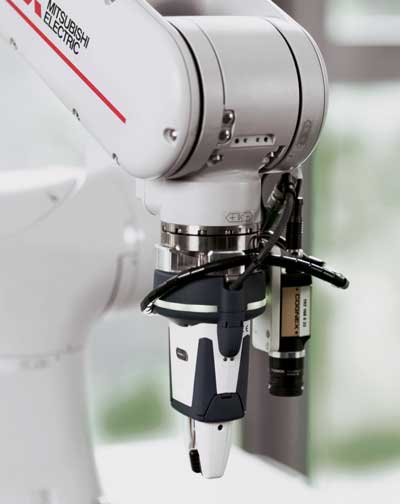 With the advancement of the robots, the usability and the Integration of peripheral devices. What used to be reserved for specialists should now be accessible to everyone. This is one of the greatest advantages of using cobots. The cobot technology allows graphic programming with icons for functions and flow charts of the process sequence. This makes programming, development and implementation times less complex.
With the advancement of the robots, the usability and the Integration of peripheral devices. What used to be reserved for specialists should now be accessible to everyone. This is one of the greatest advantages of using cobots. The cobot technology allows graphic programming with icons for functions and flow charts of the process sequence. This makes programming, development and implementation times less complex.
The movement of the cobot axles can be set manually. The Robotic arm only has to be guided into the desired positions. The grab of the cobot can be configured using graphical parameters. If image processing systems are required, there is a solution like that Melfa Assista from Mitsubishi Electric. It offers the ability to set up a camera via an intuitive software wizard that guides the user through each step of the process. He can also use other functions such as the calibration of a coordinate system Artificial intelligence (AI) automatically.
Companies that need cobots less robot or programming knowledge as would be required for the use of standard industrial robots. The quick setup of cobots drastically reduces the time required to get the system up and running, while also allowing quick adjustments.
Third: Collaborative robots can be expanded
In addition to the ease of use of cobots, features such as image processing systems and end effectors are designed to be user-friendly on the same level. So provide these components Plug-and-play functionsthat make them easily connect to the robot arms.
wiring and adapters are not necessary. That simplifies the Automation infrastructure and makes the systems more flexible. Users can easily swap components to support a wide variety of different applications.
Fourth: Cobots are flexible
The advantages mentioned above, especially the simplicity programming, installation, use and equipping of cobots also lead to extremely flexible production cells and machines. Companies can change the way cobots work and behave in just a few intuitive steps. In addition, their end effectors can be exchanged very quickly.
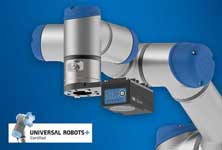 Smart vision sensors control cobots from Universal Robots
Smart vision sensors control cobots from Universal Robots
These skills are extremely beneficial to cobots fast from one task to another repurposed can be. In this way, you can benefit from highly flexible and agile systems that help automate mixed product assemblies and small series. Since the users can adapt and optimize the programs of the cobots over time, these solutions make it particularly easy to continuously increase productivity and thus implement strategies for continuous improvement.
Fifth: Cobots offer business models
Cobots are so universally applicable that they are interesting for companies and applications of all sizes. They offer one fast return on investment (ROI) - usually in less than a year.
The collaborative technology can be a Door opener be in order to be in companies Robotic or to establish or expand factory automation. Internal know-how and increasingly complex applications can develop, so that over time different types of robots are used in production lines.
Collaborative robots for high mix low volume manufacturing
11.08.2021/XNUMX/XNUMX | Increasing, often global, competition is forcing many manufacturers to adapt even more closely to the needs of their customers. In practice, these often require a reduction in batch sizes down to one. A consequence of this is that High mix low volume (HMLV) production. Collaborative robots or cobots help manufacturers to efficiently meet such individual requirements with a larger variety of products in smaller batches. For this purpose, Mitsubishi Electric offers the cobot Melfa Assista, which is positioned with the same precision as a standard industrial robot.
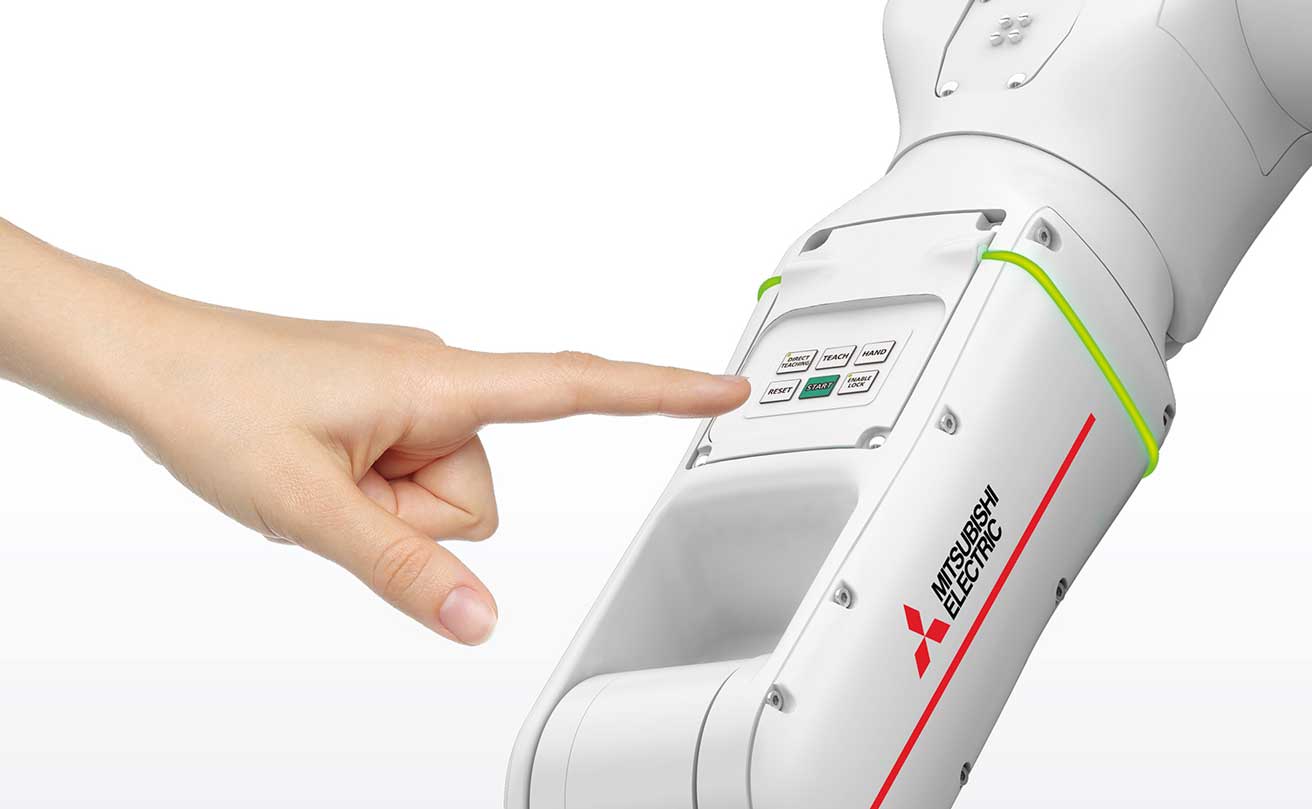
High Mix Low Volume Production and its Requirements
The Mass production continues to rely on traditional industrial robots with their repetitive tasks. In the high mix production, however, should be rethought. Here, the programming and reconfiguration time for changing products influences productivity. This can be decisive in high mix production when several line changes take place in one shift.
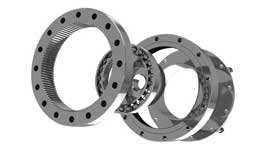 Harmonic gears for industrial robots, cobots and handling
Harmonic gears for industrial robots, cobots and handling
Many manufacturers are then increasingly dependent on manual labor. This increases the operating costs compared to large-scale production. The manual labor increases parallel to the size of the mix and the associated production costs. HMLV production requires stricter quality controls because the risk of production errors increases with decreasing lot sizes. The number of switchovers between products can also become a bottleneck.
An new collaborative robot generation from Mitsubishi Electric responds to the trend in HMLV production. Cobots offer the necessary flexibility for this. These robots can also be used to quickly and easily reconfigure processes in automation.
Human-robot collaboration for the relief of humans
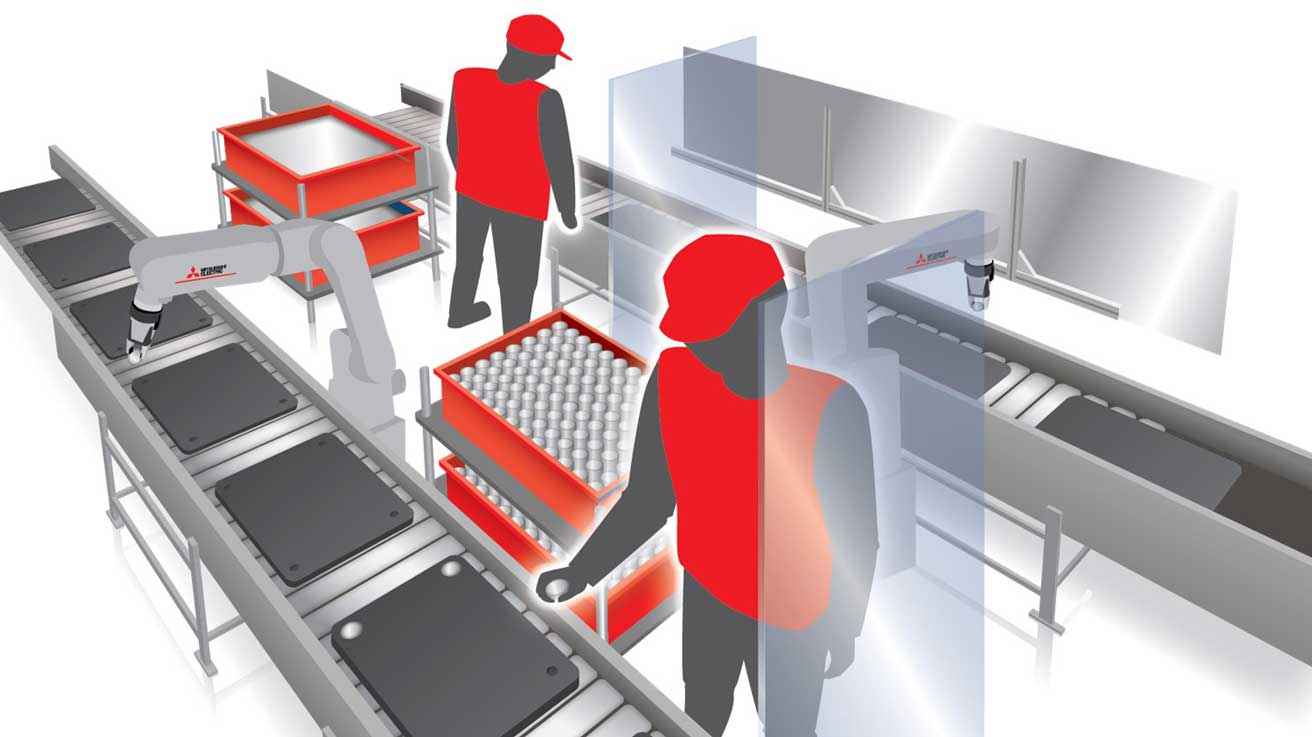
Cobots were developed to support human operators in production. You take on simple, repetitive, and physically demanding tasks. The Human-robot Collaboration greater reliability and consistency in manufacturing, while humans can concentrate on more complex tasks. A cobot is also flexible. It adapts quickly to a variety of tasks, from pick-and-place to machine operation.
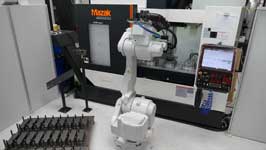 Handling robots for efficient forklift add-on parts production
Handling robots for efficient forklift add-on parts production
A major advantage of cobots is theirs simple programming. The collaborative robots can be quickly set up in new applications without specialist knowledge. The hand-guided teaching is a newer development with which the robots can be configured faster and easier. The cobot arm is moved to the desired position at the push of a button and added to the workflow. This process can be combined with graphical touchscreen interfaces to implement more sophisticated operations.
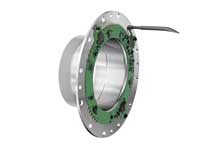 Measuring torque with sensors inside the transmission
Measuring torque with sensors inside the transmission
A is suitable for faster retooling and re-commissioning of collaborative robots Digital twin. For this purpose, a digital image of the physical robots is created, with which its performance can be assessed virtually. The digital twin also simulates the interaction of the robot. In addition, before using the cobot, he ensures that it fulfills the desired task safely and reliably in practice.
Collaborative robots reduce operating costs
The fact that cobots can be programmed and converted easily is one of the most important requirements for high mix low volume production, because they reduce operating costs. The latest cobots also work more precisely, which ensures high quality in an HMLV environment. the Melfa Assista Mitsubishi Electric cobots offer a repeatability of ± 0,03 mm. They are suitable for even the most demanding and precise tasks.
 Research project for AI based robot calibration
Research project for AI based robot calibration
When converting to HMLV production, companies find that they can set themselves apart from the competition by offering tailor-made products, even for the smallest batches. You can react better to changes in the market and that offers you additional competitive advantage. Cobots prove to be an important enabler for high mix automation and that with a maximum ROI.
Cobot Assista and its user-friendly features
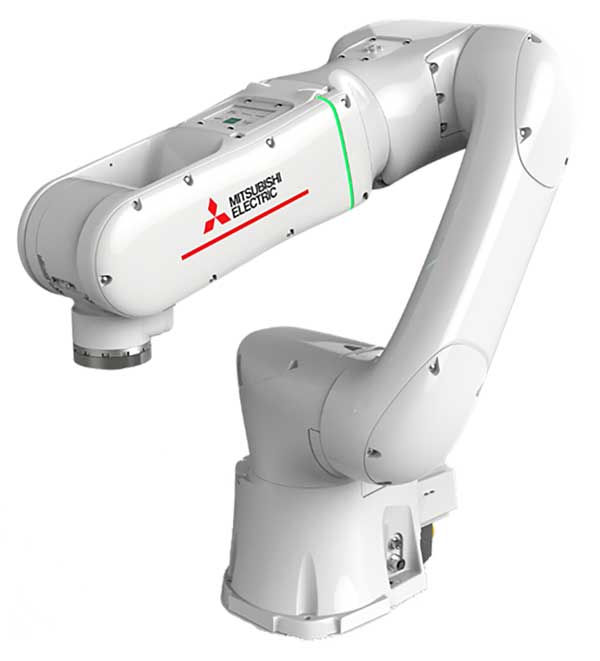
23.06.2020/XNUMX/XNUMX | The Cobot Assista from Mitsubishi Electric provides precise and safe support for people in production. The collaborative Melfa robot was created for the Automation at the side of human operators without necessary protective device or security fence.
The collaborative robot meets the requirements of industrial standards and those for special applications. For example, the robot is certified with NSF H1 grease (National Sanitation Foundation Sanitary Guidelines) for applications in the Food- and beverage industry available. Assembly tasks in the Automotive industry or the implementation of packaging tasks on production lines are predestined.
The robot was made for repetitive Pick and place Processes, complex and demanding assembly tasks or the precise holding of workpieces. At the same time, the cobot reacts flexibly to rapidly changing framework conditions.
The Assista robot from Mitsubishi Electric can be operated intuitively via a Teach function set up. To do this, the operator holds the arm of the cobot and moves it to any desired position. The one built into the cobot arm is also unique keypad. The position is then saved quickly and easily.
The automation specialist has developed new visual software for programming for more complex travel paths. With the RT visual box can be sent via Drag-and-drop various movement functions and individual adjustments to the Robotic program to each movement. This eliminates the cost of additional programming in collaborative robotics because the operator can change the settings without special robot knowledge. The application of the software is on a Tablet and can therefore be operated directly on site at the cobot.
Specifications like a standard industrial robot
The Melfa Assista offers one exceptionally high repeatability of ± 0,03 mm. The range radius is 910 mm with a nominal load of 5 kg. With the use of the cobot, product quality can be increased, the time required for quality control can be reduced and, overall, higher quality standards can be implemented. This extends the range of applications to the areas of handling, laboratory automation, precision assembly and high-quality packaging.
 Planetary gears & strain wave gears precision from Schaeffler
Planetary gears & strain wave gears precision from Schaeffler
The Melfa Cobot offers two operating modes. in the collaborative mode the Assista works at the slower speed typical of cobots. in the cooperative mode the speed is higher according to an industrial cooperative production environment. You can switch between the two modes at the push of a button.
The new cobots Melfa Assista meets all the relevant Security requirements of ISO 10218-1 and ISOTS 15066. A six-colored LED ring in the forearm of the cobot indicates the error diagnosis and operating status. This supports operation directly on the robot arm without a teach box or PC.
Trends for robots and automation in packaging technology
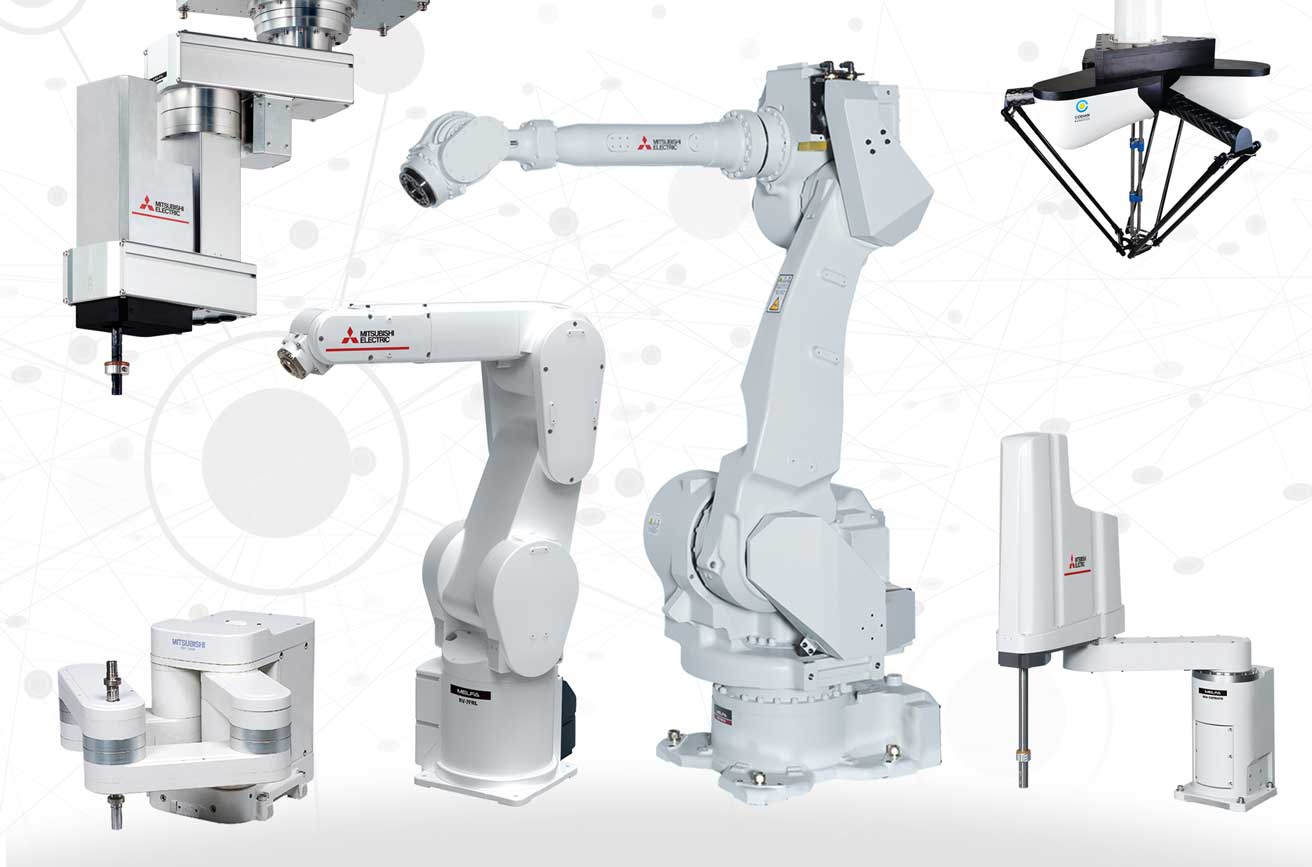
 03.12.2018 | Also the Packaging Industry adapts under the influence of global influencing factors such as regulation, shortage of skilled workers and digital transformation to the changed market requirements. The industry is increasingly relying on solutions such as human-robot collaboration, artificial intelligence and intensive data processing. Malte Schlueter, Global Key Account Director F+B/CPG, Mitsubishi Electric gives an insight into how the industry will develop.
03.12.2018 | Also the Packaging Industry adapts under the influence of global influencing factors such as regulation, shortage of skilled workers and digital transformation to the changed market requirements. The industry is increasingly relying on solutions such as human-robot collaboration, artificial intelligence and intensive data processing. Malte Schlueter, Global Key Account Director F+B/CPG, Mitsubishi Electric gives an insight into how the industry will develop.
Diversification, personalization and ever smaller lot sizes cannot always be handled economically using automated high-speed mass production processes. The corresponding tasks are often carried out contract packer (copackers) who take on complex processing tasks for small batches and premium packaging at great expense in terms of personnel and costs. Conventional industrial robots therefore play a subordinate role in this area.
Increased demand for cobots
A clear trend is the increased demand for collaborative robots (Cobots) for direct use next to people without protective equipment: This is not about replacing classic industrial robots, but about supplementing them and adding additional ones Automation – especially in the co-packing area.
The support of humans and the legwork of cobots is promising: Equipped with a Vision system they relieve people of monotonous, tiring and physically demanding hand movements, for example by handing over parts in the correct orientation or by taking over the lifting of loads. In this way, they bring about an increase in efficiency and an improvement in the quality of human work.
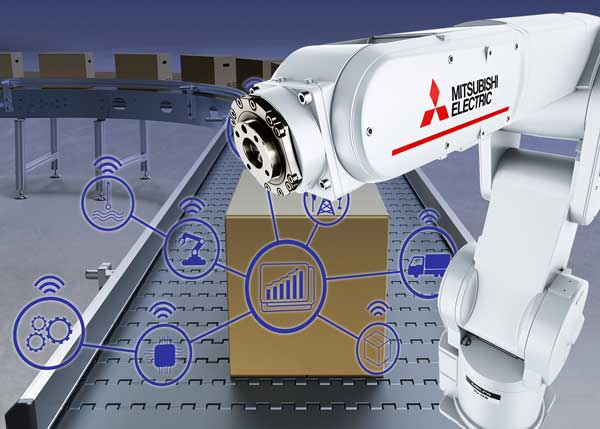 Cobots are designed from the outset for use in the immediate vicinity of people. That means they act with forces that are harmless to people and acceleration values that are in the Security Policy ISO TS15066 are fixed. Mitsubishi Electric is developing a new collaborative robot with features such as a pinch-free surface that is also easy to clean and eliminates pockets of dirt. It achieves the same repeat accuracy of ±0,02 mm as the manufacturer's industrial robots. The prototypes are still being tested, but have already been presented to a larger audience at international trade fairs.
Cobots are designed from the outset for use in the immediate vicinity of people. That means they act with forces that are harmless to people and acceleration values that are in the Security Policy ISO TS15066 are fixed. Mitsubishi Electric is developing a new collaborative robot with features such as a pinch-free surface that is also easy to clean and eliminates pockets of dirt. It achieves the same repeat accuracy of ±0,02 mm as the manufacturer's industrial robots. The prototypes are still being tested, but have already been presented to a larger audience at international trade fairs.
Another feature of cobots in general is their simple control and the low programming effort that trained personnel can take on for the end user. There are therefore no costs for external system integrators or programmers. In addition, they can be used quickly and flexibly in many application areas of the packaging industry.
For the Cobot Teaching there are different options in our prototype for force-controlled displacement of the Robotic arms by hand to the desired position through to visual programming and user interfaces on tablets or mobile devices Calibration and parameterization.
Robots without protective barrier
In the case of industrial robots, the market is now demanding alternative security solutions to fences, barriers, cages and cells. After all, these safety precautions take up valuable production space, mean a lot of additional cleaning work in hygiene areas and exclude meaningful cooperation with people. In addition, there are complex restart procedures after an emergency stop or when protective barriers have been opened.
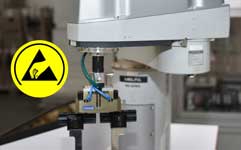 ESD certified robots for handling electrical components
ESD certified robots for handling electrical components
Instead can optical security systems be applied. Laser scanners are widely used to monitor defined zones around the robot. A special feature at Mitsubishi Electric is the safety-related reduction in the movement speed of our industrial robots as soon as a person enters their outer zone. When entering the area where there is a risk of direct contact with the robot, it stops immediately.
Instead of securing with Photocells and laser scanners Increasingly, entire rooms are monitored with camera systems. In the future, vision systems equipped with artificial intelligence (AI) should recognize when and where people enter the robot’s workspace and regulate its speed accordingly. In this way, people will soon be able to move freely and safely around robots. We are already working actively with our partners to bring appropriate solutions to market maturity.
Artificial intelligence and data mining
 In robotics, artificial intelligence (AI) describes the ability to react appropriately to unforeseen and non-programmable situations. For example, if the robot is fed a product that deviates from the norm in terms of position, geometry or packaging, without AI it is not able to identify these various irregularities and react accordingly. With AI and corresponding vision systems as a Sensors equipped robotic systems can now learn to identify these deviations and adapt their processes alternatively. Today our new robot series "Melfa FR" is available with AI functions and can increase yields in industries such as the food industry or life sciences.
In robotics, artificial intelligence (AI) describes the ability to react appropriately to unforeseen and non-programmable situations. For example, if the robot is fed a product that deviates from the norm in terms of position, geometry or packaging, without AI it is not able to identify these various irregularities and react accordingly. With AI and corresponding vision systems as a Sensors equipped robotic systems can now learn to identify these deviations and adapt their processes alternatively. Today our new robot series "Melfa FR" is available with AI functions and can increase yields in industries such as the food industry or life sciences.
AI is also used where intelligent robots Identify quality defects in products to be packaged and exchange them for flawless products during the ongoing process - even within individual packaging units. In addition, robots that can be moved manually or even mounted on driverless transport systems quickly detect their new position and adapt their processes.
Against the background of wanting to increase overall equipment effectiveness (OEE) through digitization, there is a great demand for the analysis of extracted data (Data Mining) from production. In the first place here are recipe and/or production data for internal evaluation and increase of the OEE. In addition, status and operating profiles of robot components such as the servo drives record. They provide valuable information, for example on the condition of wearing parts and accumulations of dirt. The database generated in this way enables strategies for predictive maintenance, i.e Predictive maintenance, with significant savings potential in maintenance costs.
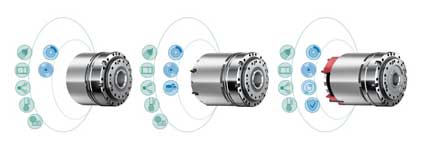 Robot drives for the rapidly growing market
Robot drives for the rapidly growing market
Another important category is Process data for traceability and for consumer information, especially in the food sector. This can be used, for example, to prove compliance with the cold chain or to attach information on the origin of food that can be called up via QR code to food packaging. At Mitsubishi Electric we can collect all data from PLCs, controls and drives centrally on site and with special Edge Computing prepare technology. This saves us expensive storage space in the cloud and gives us many other advantageous options for production control and monitoring.
Robots are therefore far from replacing manual work in the packaging industry. However, as fully integrated, intelligent 'colleagues' they become them more ergonomic and efficient make. This is no longer a dream of the future either, because we already have the relevant technology – and it is economical.
You might also be interested in...

Artificial Intelligence | trends and developments
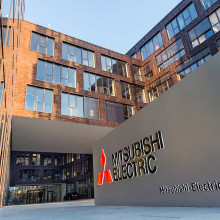
Mitsubishi Electric | Automating the World

Intelligent CNC control for machine tools
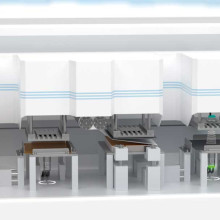
battery production | Facts and Technologies
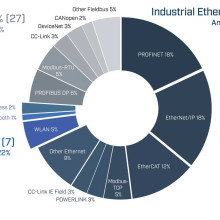
Industrial Ethernet | Profinet, Powerlink & Co.
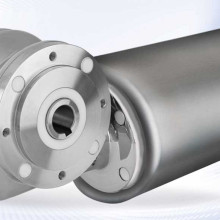
servo motor | Electric motor with control electronics

Oliver Giertz is Product Manager Servo / Motion and Robotics EMEA at Mitsubishi Electric, Factory Automation.
